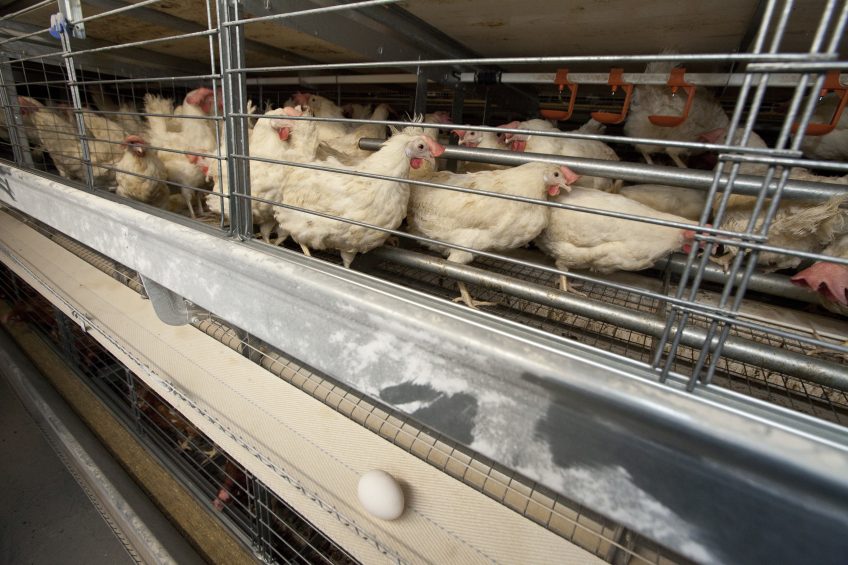Welfare versus natural behaviour: A fine balance

Colony egg systems are often considered lower welfare, but by some measures can offer birds easier access to feed and water, and less risk of disease, as delegates at the latest meeting of the UK Branch of the World’s Poultry Science Association heard.
It was almost two years ago that Tesco announced it would end the sale of colony eggs, prompting Aldi, Asda, Lidl and Morrisson’s to follow suit. They joined Co-op, Marks & Spencer, Sainsbury and Waitrose, meaning that, if commitments are upheld, few eggs from caged hens will be on sale by 2025.
Evidence
Retailers explain their decision to move to cage-free egg sales as pressure from social media and NGOs, but Dr Vicky Sandilands of SRUC in Ayr questioned whether the evidence presented by these organisations in favour of such housing systems for laying hens is balanced.
Taking each of the “Five Freedoms” in turn, she presented her expert views on the welfare consequences for the bird moving from enriched cage into barn, free-range or organic housing. While cage-free systems offer greater opportunity for the bird to express natural behaviour, they present some risks to welfare.
Freedom from thirst, hunger and malnutrition are basic requirements for any production system, not least because deficiencies in these areas will reduce egg laying. However, recent research has shown that dominant birds will displace those lower in the pecking order when feed space allowance at a linear trough is close to the legal minimum per bird.
Injuries
Non-cage systems are more likely to result in pain, injuries and disease than cages in Dr Sandilands’ opinion. Greater opportunities for the birds to move around the house lead to more falls and collisions with other birds, and to damage to the keel bone and other painful injuries, although better perch design and the provision of ramps allow the birds to move through multi-tier systems more safely. Most hens destined for barns and free-range systems are beak-trimmed as chicks, a procedure that causes short-term pain but may prevent injurious pecking later in life.
Risks
Generally, mortality is higher in non-cage housing than in enriched cages. Disease risks are lower where the birds are separated from their droppings — especially from the multitude of disease-causing organisms that may be present in outdoor ranges — and in houses that do not rely on natural ventilation. Poor air quality and high ammonia levels are known to damage the respiratory system and make birds more prone to disease.
In contrast, non-cage systems offer the birds more possibilities to move around the house — and outdoors for free-range systems — to achieve thermal and physical comfort. While all layer housing systems provide nest boxes, perches and some litter for the birds, options for caged hens are more restricted by space.
Non-cage systems offer no clear advantages over cages in terms of freedom from fear and distress, according to Dr Sandilands. While the more diverse environment of non-cage systems generally make birds less fearful of novel sights and sounds, they are more prone to smothering when they are alarmed.
Natural behaviour
For the fifth and final freedom, that of the ability to express natural behaviour, non-cage systems offer more opportunities to the birds because of the larger overall space available. Lower ranking hens can more easily escape the attention of dominant birds by moving to other perches, although this freedom of movement is associated with higher risk of injury. While feather pecking and cannibalism can occur in any production system, the risk is reduced where the birds can express natural foraging behaviour in outdoor runs. Important for maintaining the insulation quality of the downy part of the feathers, dust bathing is also more easily expressed where the birds have access to floor litter or dirt on the outdoor run.
Nesting
Nest boxes are provided with all layer housing systems in some form. Those in enriched cages offer less risk of smothering, which can occur in non-cage systems during peak laying times when the hens do not make use of all the nest boxes provided.
Any assessment of the balance between these welfare risks associated with non-cage housing and the bird’s preferences is likely to be somewhat subjective, according to Dr Sandilands. However, where there are risks, there are opportunities for mitigation, for example, by implementing new management strategies, she concluded.













